|
Reply |
Message 1 of 22 on the subject |
|
Photos of the arrival of "The Cloud of God's Glory" back onto the Earth again
The beloved one told me to notice the very unusual red red sunset that was happening outside. So I said that had to be the most amazing thing that I had ever seen. God then said to get a camera, and take a picture of it. I do. And as I stand there a huge blast of light came down. And then mighty "Shekinah" herself (God), or the "Cloud of God's Glory" came down, in a ball of fire. And it was all captured on film.
For the first time in recorded history. God allowed herself to be photographed. A total of four different pictures were captured. An groundbreaking historical event to be sure. The return of the "divine presence" or the actual physical presence of God to the earth, the mighty Shekinah. *Note: The mighty "Shekinah" or the "Cloud of God's Glory" (another term used in the bible is the "Glory of the Lord") is a very enhanced version of the "Holy Spirit" of God. It is the "focal point" of God, it is the exact point where the "divine presence" of God exists. The Shekinah of God (the presence of God) was last seen on the Earth in 73AD, she left three years after the second Holy Temple (her home) was lost.
In this first picture, you see a huge blast of light come down from the sky, and you can just start to see the beginnings of the eyes and nose of the beloved "Shekinah", or "the Cloud of God's Glory", starting to form up and come together.
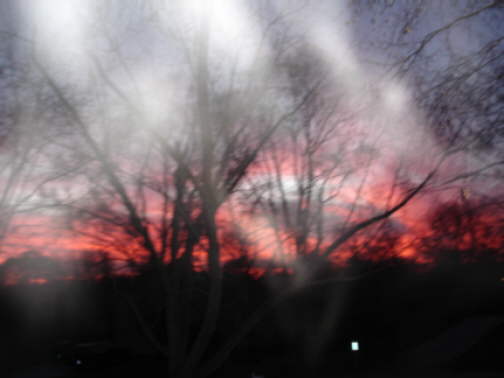
In the lower picture, after the big blast of light passed, you see a clear picture of the mighty "Shekinah" (in the bible called "the Cloud of God's Glory"), and all the many many additional signs that God added to the picture. The Shekinah is in the center, a little to the right in the lower picture, its beautiful eyes, eyelashes and nose are the first things that you see.
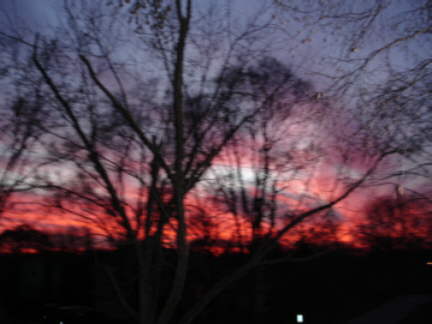
A total of four pictures of the "Cloud of God's Glory" (or "the Shekinah") were captured. This would be the first real image of God that has ever been captured since the dawn of time.
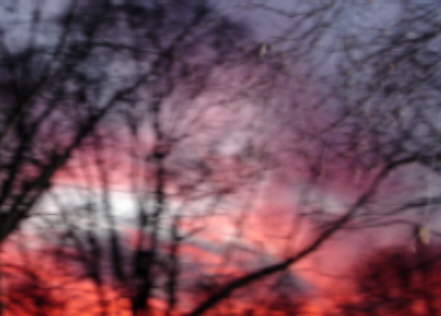
The beloved "Shekinah" (or the other term used is "the Glory of the Lord") that you see in the center of this blow up of that picture is a very enhanced version of the "Holy Spirit" of God.
Among the Hebrews one of the traditional names of God is "the Shekinah", and it is a feminine gender noun. From time immemorial, the Jews have always considered God to be a female. Many Hebrews see "the Shekinah" as the mother or feminine aspect of God.
To console an Israel in dispersion, the comforting, forgiving and loyal presence of God in the form of the Shekinah emerged. In the Talmud it says: "They were exiled to Babylon, the Shekinah with them. They were exiled to Egypt, the Shekinah with them." And, it says in Lamentations 1, 5, "Her children are gone into captivity," and immediately after (1,6), "From Zion her splendor is departed." (Note the use of "her" for God and "splendor" is also one of the ways to describe the Shekinah).
Other terms in the bible referring to the Shekinah are "The Glory of the Lord" and "The Cloud of God's Glory".
She was the pillar of fire that led the Israelites through the wilderness. She was the burning bush that spoke to Moses.
"The Shekinah" eventually became an interchangeable term with "the Holy Spirit' in both Judaism and Christianity.
In the new testament I referred to God as "Dear Father". But I could just as easily said "Dear Mother". "Dear Parent" might have been a little more accurate.
In the photograph of the Shekinah,
The close up of the pretty eyes and nose,
Shows that even the pupils are in the exact right spot.
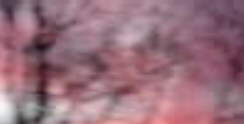
Right in the center of the iris of God's eyes.
The pretty eyes and the beautiful eyelashes are also from the Song Of Solomon. "Your eyes are like doves", Song 1:15. Now you can see what Solomon was referring to. The entire Song Of Solomon book in the bible is written just about its great beauty and poise. The Shekinah is said to be the "only Holy One" or the only truly pure untainted entity in the galaxy.
"And it came to pass, when the priests were come out of the holy place, that the cloud filled the house of the Lord, So that the priests could not stand to minister because of the cloud, for the glory of the Lord had filled the house of the Lord". (I Kings 8:10-11)
"Now on the day that the tabernacle was erected, the cloud covered the tabernacle, the tent of the meeting, and in the evening it was like the appearance of fire over the tabernacle, until morning". (Numbers 9:15)
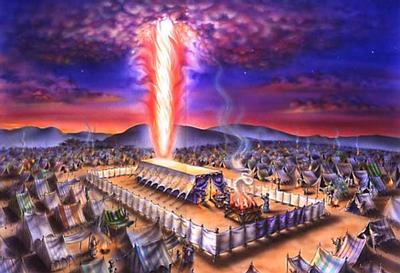
This is an image of the Cloud of God's Glory or the Shekinah as it appeared over the "Tent of the Meeting" in the wilderness as the Jews left Egypt. The Cloud of God's Glory is the flame that led the Jews in the wilderness, it is the flame that spoke to Moses from within the burning bush. It still burns very hot as you see in the above pictures, this is how the flame looked to the Jews in the wilderness as they left Egypt. In the bible proper it is repeatedly called "the Cloud of God's Glory" or the "Glory of the Lord". It is written that the second coming will come in "on a cloud", this is that cloud.
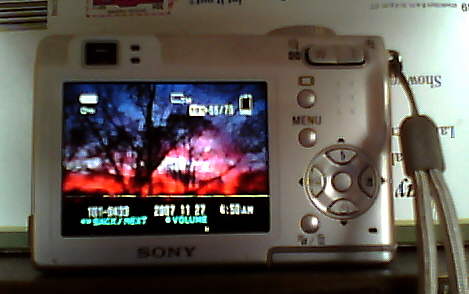
**All the original photos are still in the camera for inspection and have not been altered or modified in anyway.** Included is a photo of the originals of the pictures as they are shown on the display screen on the back of the camera to show that they have not been altered or modified. All the photos that you see are the unedited originals only. For the "Doubting Thomas's" amongst us.

On the close up of the "Cloud of Glory's" face, you can see all the hidden symbols that the Father put in to explain what is now happening on the earth. I will explain their all meanings, just as the Father explained them to me. If you set this picture as your desktop background it will blow it up to proper size for you.
The first thing that you see in the photo is "White River of Life". It flows through the Father's image out to the left. It has a branch coming up to meet it and that represents "the Shoot of Jesse" (the second coming) mentioned in Isaiah 11:1-4.
1Then "a shoot" will spring from the "stem of Jesse", and a "branch from its roots" will bear fruit. 2The Spirit of the LORD will rest on him, the spirit of wisdom and understanding, the spirit of counsel and strength, the spirit of knowledge and the fear of the LORD. (Isaiah 11:1-4)
The two branches combine into one "White River", a bleaching or purifying river.
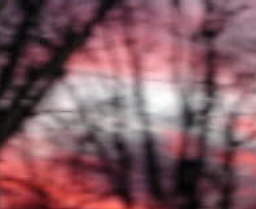
"The face in the white river" looking over to the Cloud of Glory (or the other term used is the "Glory of the Lord") is the second coming and "the white river" shows the bleaching or the purification process that he will bring to the whole world to cleanse it.
All the way on the right lower corner in the photo you see a smiling face, it is a representation of "a spirit of mirth" or Satan, the Accuser.
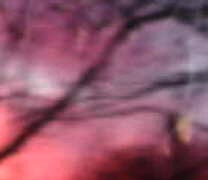
From Mirth's mouth and his eyes two black rivers flow towards the headwaters of the Father's main branch of the "white river", trying to foul it.
The black river flowing from Mirth's eyes is television. And the black river flowing from Mirth's mouth is radio. The broadcasting devices of Satan foretold in Revelation 13:15.
They are blocked just before they foul the white river by "the Hand Of God" pointing to the branch or the shoot of Jesse again from Isaiah 11:1.
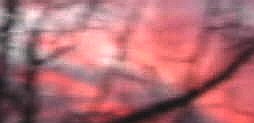
The Hand of God pointing to "the Branch" mentioned in Isaiah 11:1.
"The Branch" is also described in the book of Zechariah:
"Thus speaketh the Lord of hosts, saying, Behold the man whose name is the Branch; and he shall grow up out of his place, and he shall build the temple of the Lord; even he shall build the temple of the Lord; and he shall bear "the Lord's Glory" (the Cloud of God's Glory), and shall sit and rule upon his throne; and he shall be a priest upon his throne; and the counsel of peace shall be between them both." Zechariah 6:12-13.

Note above - this is the picture of the "Shekinah" or "the Cloud of God's Glory" arriving back on the earth again after being gone about some 2000 years. It would make a very good computer "background screen" and it will provide you with a form of good luck if you use it in that capacity to show your honor for God and to always remind yourself that the very Holy Spirit of God (Shekinah) is now back on the earth. Now the times, they will be a changing. The Shekinah brings "The New Ways" for "The New Days". And those new ways are contained herein in the New Holy Bible.
To make it a large picture that fills the whole screen (instead of just a little picture in the middle of your screen) you must do it in two steps. First right click and save the photo to your computer. Then find the photo on your computer and right click on it again and then select "set as computer background".

Main Menu Or to return to exactly where you came from hit the Left Arrow Button in the upper left corner of your browser.
TheNewHolyBible.org
And as you can see in its picture, anytime the Shekinah desires it can still turn on the same beautiful flame that led the Jews in the wilderness. The Cloud of God's Glory's other nickname comes from its flame, it is
The Firestorm.
"I looked, and I saw "a firestorm" coming out of the north, an immense cloud with flashing lightning and surrounded by brilliant light. The center of the fire looked like glowing metal, and in the fire was what looked like four living creatures". (Ezekiel 1:4-5)
It is written in Revelation 10:1-11 that "a mighty angel clothed in a cloud" would arrive with a "little book" to save the nations:
"1And then I saw a mighty angel come down from Heaven, clothed with a cloud, and a rainbow was upon his head, and his face was as it were the sun, and his feet as pillars of fire. 2And he had in his hand a little book open, and he set his right foot upon the sea, and his left foot on the earth, 3And cried with a loud voice, as when a lion roared" (Revelation 10:1-3)
The "Cloud of God's Glory" or "the Shekinah" is the cloud that is mentioned, "The New Holy Bible" is the little book that is mentioned, and the mighty angel is the Messiah, the Second Coming of Lord Jesus Christ.
"And they shall see the Son of Man coming in a cloud with power and great Glory" (Luke 21:27)
In this verse from Luke the "son of man" is the Second Coming of the Messiah, the Lord Jesus Christ. "The cloud" is again the Cloud of God's Glory or "the Shekinah". The Shekinah or "the cloud" is the vehicle which brought the "little book" down from Heaven to you.
And this "little book", is The New Holy Bible.
Now, the only ticket left to Heaven.
It is called, "The Tree of Life".
You might want to read it.
|
|
|
|
Reply |
Message 8 of 22 on the subject |
|
 por Admin el Dom Jul 19, 2009 1:29 am por Admin el Dom Jul 19, 2009 1:29 am
Las columnas tambien representan al Rey Salomon y a David y en su tope son en si un lirio con granadas alrededor simbolizando el Amor de Dios hacia ambos por ser los fundadores del pueblo de Israel y los constructores del Templo. Tenemos que resaltar que David significa amado y el segundo nombre de Salomon, Jedidiah, significa el amado de Dios.La columna Jachin que es Yah, significa establecer y Boaz (David) es Fuerza, Segunda de Samuel 12:25.Es David quien expresa su deseo de construir el Templo, Cronicas 17:1, pero es su hijo Salomon quien lo llevara a efecto.David lucho contra el Rey Habadazer y en los pueblos de Tibbath y Cun luego de su conquista tomo grandes cantidades de bronce. Con este bronce es que Salomon construye las columnas y cun se relaciona con Jachin porque significa tambien establecer y Jachin (Yakin, Yah-kin) quiere decir Yah establece y Yah es solo una contraccion del nombre de Dios, Yahweh.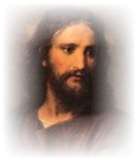  JACHIN JACHIN Se mencion tres veces Jachin en la Biblia . La primera vez se refiere al hijo de Simeon, el hijo de Jacob. El segundo Jachin es un descendiente de Aaron (1 Chr 24:17). 3). El tercer Jachin es la columna derecha en el frente del Templo; la columna izquierda se llama Boaz (1 Kings 7:21).El nombre Jachin viene de la palabra Se mencion tres veces Jachin en la Biblia . La primera vez se refiere al hijo de Simeon, el hijo de Jacob. El segundo Jachin es un descendiente de Aaron (1 Chr 24:17). 3). El tercer Jachin es la columna derecha en el frente del Templo; la columna izquierda se llama Boaz (1 Kings 7:21).El nombre Jachin viene de la palabra  (kun 964), que quiere decir establecido, preparado, fijo, cierto. Sus derivados son: (kun 964), que quiere decir establecido, preparado, fijo, cierto. Sus derivados son: (ken 964a), cierto, verdad; (ken 964a), cierto, verdad; (ken 964b), asi; (ken 964b), asi;  (makon 964c), el lugar en que habita Dios; (makon 964c), el lugar en que habita Dios;  (mekona 964d), base - solo usado en 1 de Reyes 7 en referencia a las bases de bronce.Jachin es la forma activa de (mekona 964d), base - solo usado en 1 de Reyes 7 en referencia a las bases de bronce.Jachin es la forma activa de (kun 964), que significa El establecera , o El dara la Certeza. (kun 964), que significa El establecera , o El dara la Certeza. BOAZ BOAZ El nombre Boaz aparece dos veces en la Biblia. La primera Boaz es un enamorado adinerado de Ruth, eventualmente el padre de Obed, el padre de Jesse, el padre del Rey David. El otro Boaz es la columna izquierda del Templo de Salomon; la columna derecha es Jachin (1 Reyes 7:21).La palabra El nombre Boaz aparece dos veces en la Biblia. La primera Boaz es un enamorado adinerado de Ruth, eventualmente el padre de Obed, el padre de Jesse, el padre del Rey David. El otro Boaz es la columna izquierda del Templo de Salomon; la columna derecha es Jachin (1 Reyes 7:21).La palabra  en si no existe en Hebreo y su unico posible origen es el nombre compuesto de la particula en si no existe en Hebreo y su unico posible origen es el nombre compuesto de la particula  (ser), en, estar o por; y el verbo (ser), en, estar o por; y el verbo  (azaz), se fuerte. Derivados: (azaz), se fuerte. Derivados: (az y oz) que significa fortaleza. Un nombre relativo es GazaLa palabra Boaz literalmente significa Fortaleza y al parecer se usa para celebrar el vigor personal del hombre. La fortaleza personal puede ser una cualidad , pero ella, como cualquier otra cosa, no debe ser muy reverenciada y n ciertamente no tenerla como resposable de nada que pueda ser hecho por Dios. Asi sea que Salomon nombro una de las columnas en honor a su tatarabuelo o quizas porque sea una mera coincidencia no se ha podido determinar. (az y oz) que significa fortaleza. Un nombre relativo es GazaLa palabra Boaz literalmente significa Fortaleza y al parecer se usa para celebrar el vigor personal del hombre. La fortaleza personal puede ser una cualidad , pero ella, como cualquier otra cosa, no debe ser muy reverenciada y n ciertamente no tenerla como resposable de nada que pueda ser hecho por Dios. Asi sea que Salomon nombro una de las columnas en honor a su tatarabuelo o quizas porque sea una mera coincidencia no se ha podido determinar. EL REY SALOMON EL REY SALOMON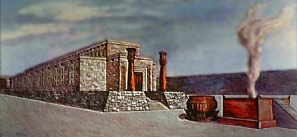 EL TEMPLO DE SALOMONEtimológicamente, la palabra templo se relaciona con el sánscrito tamas, “oscuridad”, de donde viene también el latín tenebrae (por temebrae), “tinieblas”. Significa, por lo tanto, lugar oscuro, y por consiguiente “oculto”, aludiendo a la antigua costumbre de hacer los templos en grutas o criptas subterráneas, fuera de la luz exterior y al amparo de la indiscreción profana.El Templo masónico es un cuadrilongo extendido de Oriente a Occidente, es decir “en la dirección de la Luz”. Su anchura es del Norte al Sur (desde la potencialidad latente a la plenitud de lo manifestado), y su altura del Cenit al Nadir. Esto quiere decir que prácticamente no tiene límites y abarca todo el Universo, en el cual se extiende la actividad del Principio Constructivo, que siempre obra en la dirección de la luz, como puede observarse en la naturaleza.Todos los templos antiguos, cualquiera que fuese el uso al que estaban destinados, presentaban esta común característica de la orientación, muchas veces con exactitud asombrosa. Aunque la orientación más frecuente sea la que precisamente indica la palabra (en dirección del Oriente), algunos templos presentan la dirección opuesta, estando la puerta del lado del Oriente, para que los primeros rayos del sol caigan en determinado punto, que resplandece repentinamente en la semioscuridad del lugar. En algunos casos, familiares para los arqueólogos, esta orientación hacia el sol se hace por medio de un corredor estrecho, de manera que los rayos luminosos puedan pasar únicamente en cierto día o época del año (generalmente solsticio y equinoccio). Otros templos están orientados hacia alguna estrella particular de primera magnitud (como Sirio, Canopo, o la Estrella Polar), en ciertos templos egipcios).En cuanto a las dimensiones del Templo, podemos considerarlas hasta cierto punto equivalentes: tanto el Norte y el Cenit, como el Oriente, indican el Mundo Divino de los Principios o dominio de lo Trascendente; mientras el Sur, el Nadir y el Occidente representan, de diferentes maneras, el mundo manifiesto o fenoménico.La diferencia estriba principalmente en que la dirección del Oriente al Occidente se refiere al Sendero de la vida o Camino de Progreso; la del Norte al Sur, a la Ley de los ciclos, que nos acerca alternativamente al dominio de las Causas y al de los Efectos; y la vertical, al Padre y a la Madre, de los que somos igualmente hijos, o sea a las dos gravitaciones, celestial y terrenal, que respectivamente atraen nuestra naturaleza espiritual y material.También podemos ver en estas tres direcciones dimensionales una alusión a los tres movimientos de la Tierra: de rotación (Oriente-Occidente), de revolución (Norte y Sur), y de precesión (Cenit-Nadir): o sean las tres dimensiones dinámicas del mundo en que vivimos.Viendo una antigua ceremonia de iniciación que se llevaba a cabo en la gran pirámide, nos daremos clara cuenta del porque se sube con el pie izquierdo y se baja con el derecho, demostrando así que los viejos usos y costumbres tienen su razón de ser dentro de la masonería y que nadie por parecerle algo equivoco o anticuado tiene el derecho de omitir, dejar en el olvido o modificar.¿Por qué se sube a Or :. con el pie izquierdo y se baja con el pie derecho y su explicación Simb :.Mis HH :. Sin duda alguna gran parte de lo ritualistico o simbólico dentro de la Mas :. se ha perdido ya sea por causa del tiempo y el olvido de la memoria, o no se ha perdido, pero no se sabe con certeza el porque de tal uso y costumbre, así que al no saberse a ciencia cierta o no saberse del todo es condenado al desuso o negado alegando que no se le enseño tal cuestión y por tal motivo no es algo cierto, mis HH :. Recordad la Filosofía del Apr :. Mas :. Observo, Dudo, Concluyo. Concluyo, Observo, Dudo. Dudo, Medito, Descubro.Las tradiciones, usos y costumbres, así como los aspectos litúrgicos que han sido borrados, modificados o ignorados quien sabe por que razón o ideas erradas, están o estarán a entera disposición de quienes tengan el interés de buscar la verdad de las cosas, recuerden mis hermanos el segundo Toq :. a las puertas del Temp :. BUSCAD y encontrareis la VERDAD uniendo extremos, sabiendo preguntar y sabiendo buscar las cosas tarde que temprano se nos manifiestan ya que por mas que se haga empeño en erradicarlas o sean olvidadas, siempre dejaran algún vestigio de el conocimiento dejado por los que nos han antecedido. Y recordad el objeto de los estudios del Apr :. Sembrar la duda.De acuerdo con la instrucción tradicional la marcha del aprendiz simboliza que los masones van de las tinieblas de Occidente, a la luz de Oriente, en busca de la SABIDURIA. La marcha índica el espíritu de cada grado. El profano tiene la marcha incierta porque no sabe hacía dónde va, representando el estado de ignorancia del hombre anterior a la civilización. El aprendiz marcha de frente en línea recta, para significar que no tiene más que un objeto, el de llegar, directamente y sin desviarse a las luces de la civilización. Hasta este punto todos los Mas :. estamos de acuerdo, pero existe un detalle, solo existe una sola marcha del Apr :. y esta se efectúa al ingresar al Temp :., al aproximarnos a la balaustrada para subir los tres escalones, ya sea para que se lea un Trab :. o para hacer cualquier cosa en Or :. No se hace una marcha, simplemente se sube a Or :., pero el acto de subir tiene un significado Simb :., de acuerdo con nuestro Q :. H :. Rene Guenon, el iniciar la March :. del Apr :. Con el pie izquierdo no es algo que se encuentre reconocido por todos los Rrit :. Mas :., pero lo que a nosotros nos interesa es que en el R :. E :. A :. y A :. Si y cosa curiosa, la March :. Del Apr :. Comienza con el pie izquierdo, y al subir los tres escalones para acceder a Or :. También se hace de la misma manera, con el pie izquierdo, pero se baja con el pie derecho, en una ocasión antes de comenzar una tenida, discutía el tema con un H :. La cuestión del bajar con el pie derecho y me señalaba que no era algo correcto, que por lo menos para el era así que se subía a Or :. Con el pie izquierdo y se baja con el mismo pie izquierdo y que yo no estaba en lo correcto en cuanto a el asunto del pie derecho, le argumente que pues estábamos en una cuestión encontrada ya que a mi también se me había enseñado tal cosa y que aparte de eso lo había observado en otros Or :., a lo que me contesto que no era así, que se lo demostrara y como todo lo que rodea nuestro templo es Simb :. Y este es muy basto hay cosas que ni siquiera el Mas :. Mas docto sabe, pero yo si sabia algo al respecto pero no recordaba con exactitud los detalles y le comente que no podría decirle como se debía, el porque y me dijo que si no se lo demostraba la cuestión no era cierta.Años atrás me había tocado recibir instrucción cuando mi tiempo de aprendiz y eso había sido en el R :. N :. M :. AC. Cuestión que no me avergüenza comentar ya que si se me dio tal instrucción algo bueno debieron de haber aportado a mi formación masónica, esta costumbre me toco observarla también en absolutamente todas las Llogs :. Todo esto tiene que ver con la luna y el sol, y es tema para la primera camara e indagar sobre esto debe hacerse de una forma muy velada. Recuerden que el conocimiento masónico se adquiere a base de estudio.Mis HH :. Si miramos detenidamente a Or :. Ahí podremos observar un sol y en el dosel del trono del V :. M :. Habrá una estrella de cinco puntas con una letra G, en medio, y más abajo un triángulo equilátero con un ojo en el centro. A la derecha un Sol en todo su esplendor; y a su izquierda una luna en cuarto menguante, ahí es donde esta primordialmente la clave de esta cuestión, en el sol y la luna, bueno por lo menos parte de ella.Se sube con el pie izquierdo, y se baja con el derecho porque al subir con el pie izquierdo estas subiendo los peldaños a la sabiduría que es emanada en la forma simbólica de la gran luz expelida por el astro rey, tratando de alcanzar la sabiduría y la manifestación divina, perfeccionando tu esencia lunar o imperfecta, a este ultimo sentido comparémoslo con el hecho de que procedemos de las tinieblas de occidente, caminando hacia la sabiduría de oriente y al bajar con el pie izquierdo, retornamos de la luz de oriente a las tinieblas de occidente a seguir pulimentando nuestra piedra en bruto, recordando siempre que del lado izquierdo del venerable maestro esta la luna, que también tiene algo que ver simbólicamente con la estrella polar, y si hacemos caso a el sentido esotérico que en la masonería se observa, puedo yo interpretar esta situación como que simbólicamente la masonería en este hecho del subir y bajar con pie izquierdo primero y el derecho después nos muestra que las enseñanzas y tradiciones de oriente están resguardadas por occidente, pero en occidente todavía no hay la luz y preparación suficiente para poder recibirla, y eso solo se hará por medio del constante desbastar de nuestra piedra en bruto.En un fragmento de un antiguo ceremonial de iniciación egipcia, que leí hace tiempo en una publicación de Rodolfo Benavides, en el tiempo en el que el intentaba investigar en calidad de egiptólogo y que recuerdo un poco el describía un ritual de recorrido iniciatico, que se trazaba en el interior de la gran pirámide, se podía observar en el diagrama como el sujeto a ser iniciado hacia un trayecto iniciando desde el norte y que partía con el pie izquierdo indicando marchar a la derecha (oeste), donde se efectúa simbólicamente el morir en si mismo, que es claramente el objetivo de la iniciación, el morir a un estado anterior y renacer a uno nuevo, esto como primera parte del trayecto.Ya visto desde el sur, el pie derecho, indicando marchar a la izquierda (este), para renacer, lo cual completaría la ceremonia como un nuevo iniciado en los misterios. Mis HH :. En cuanto al hecho de que se sube a Or :. Con el pie izquierdo lo se, y ustedes también, y en cuanto al hecho de que se baja con el derecho, lo aseguro como lo aseguran en muchos Or :. Dentro y fuera de nuestro país, bello simbolismo legado por oriente para uso de occidente, este tema es extremadamente complicado por el hecho de que puede y debe ser analizado de manera mas elevada y con mucha profundidad.A mis HH:. AAprs :. Mis HH :. Dudad de todo cuanto os parezca erróneo, ya que vivir en el error, esclaviza el espíritu y el intelecto. EL TEMPLO DE SALOMONEtimológicamente, la palabra templo se relaciona con el sánscrito tamas, “oscuridad”, de donde viene también el latín tenebrae (por temebrae), “tinieblas”. Significa, por lo tanto, lugar oscuro, y por consiguiente “oculto”, aludiendo a la antigua costumbre de hacer los templos en grutas o criptas subterráneas, fuera de la luz exterior y al amparo de la indiscreción profana.El Templo masónico es un cuadrilongo extendido de Oriente a Occidente, es decir “en la dirección de la Luz”. Su anchura es del Norte al Sur (desde la potencialidad latente a la plenitud de lo manifestado), y su altura del Cenit al Nadir. Esto quiere decir que prácticamente no tiene límites y abarca todo el Universo, en el cual se extiende la actividad del Principio Constructivo, que siempre obra en la dirección de la luz, como puede observarse en la naturaleza.Todos los templos antiguos, cualquiera que fuese el uso al que estaban destinados, presentaban esta común característica de la orientación, muchas veces con exactitud asombrosa. Aunque la orientación más frecuente sea la que precisamente indica la palabra (en dirección del Oriente), algunos templos presentan la dirección opuesta, estando la puerta del lado del Oriente, para que los primeros rayos del sol caigan en determinado punto, que resplandece repentinamente en la semioscuridad del lugar. En algunos casos, familiares para los arqueólogos, esta orientación hacia el sol se hace por medio de un corredor estrecho, de manera que los rayos luminosos puedan pasar únicamente en cierto día o época del año (generalmente solsticio y equinoccio). Otros templos están orientados hacia alguna estrella particular de primera magnitud (como Sirio, Canopo, o la Estrella Polar), en ciertos templos egipcios).En cuanto a las dimensiones del Templo, podemos considerarlas hasta cierto punto equivalentes: tanto el Norte y el Cenit, como el Oriente, indican el Mundo Divino de los Principios o dominio de lo Trascendente; mientras el Sur, el Nadir y el Occidente representan, de diferentes maneras, el mundo manifiesto o fenoménico.La diferencia estriba principalmente en que la dirección del Oriente al Occidente se refiere al Sendero de la vida o Camino de Progreso; la del Norte al Sur, a la Ley de los ciclos, que nos acerca alternativamente al dominio de las Causas y al de los Efectos; y la vertical, al Padre y a la Madre, de los que somos igualmente hijos, o sea a las dos gravitaciones, celestial y terrenal, que respectivamente atraen nuestra naturaleza espiritual y material.También podemos ver en estas tres direcciones dimensionales una alusión a los tres movimientos de la Tierra: de rotación (Oriente-Occidente), de revolución (Norte y Sur), y de precesión (Cenit-Nadir): o sean las tres dimensiones dinámicas del mundo en que vivimos.Viendo una antigua ceremonia de iniciación que se llevaba a cabo en la gran pirámide, nos daremos clara cuenta del porque se sube con el pie izquierdo y se baja con el derecho, demostrando así que los viejos usos y costumbres tienen su razón de ser dentro de la masonería y que nadie por parecerle algo equivoco o anticuado tiene el derecho de omitir, dejar en el olvido o modificar.¿Por qué se sube a Or :. con el pie izquierdo y se baja con el pie derecho y su explicación Simb :.Mis HH :. Sin duda alguna gran parte de lo ritualistico o simbólico dentro de la Mas :. se ha perdido ya sea por causa del tiempo y el olvido de la memoria, o no se ha perdido, pero no se sabe con certeza el porque de tal uso y costumbre, así que al no saberse a ciencia cierta o no saberse del todo es condenado al desuso o negado alegando que no se le enseño tal cuestión y por tal motivo no es algo cierto, mis HH :. Recordad la Filosofía del Apr :. Mas :. Observo, Dudo, Concluyo. Concluyo, Observo, Dudo. Dudo, Medito, Descubro.Las tradiciones, usos y costumbres, así como los aspectos litúrgicos que han sido borrados, modificados o ignorados quien sabe por que razón o ideas erradas, están o estarán a entera disposición de quienes tengan el interés de buscar la verdad de las cosas, recuerden mis hermanos el segundo Toq :. a las puertas del Temp :. BUSCAD y encontrareis la VERDAD uniendo extremos, sabiendo preguntar y sabiendo buscar las cosas tarde que temprano se nos manifiestan ya que por mas que se haga empeño en erradicarlas o sean olvidadas, siempre dejaran algún vestigio de el conocimiento dejado por los que nos han antecedido. Y recordad el objeto de los estudios del Apr :. Sembrar la duda.De acuerdo con la instrucción tradicional la marcha del aprendiz simboliza que los masones van de las tinieblas de Occidente, a la luz de Oriente, en busca de la SABIDURIA. La marcha índica el espíritu de cada grado. El profano tiene la marcha incierta porque no sabe hacía dónde va, representando el estado de ignorancia del hombre anterior a la civilización. El aprendiz marcha de frente en línea recta, para significar que no tiene más que un objeto, el de llegar, directamente y sin desviarse a las luces de la civilización. Hasta este punto todos los Mas :. estamos de acuerdo, pero existe un detalle, solo existe una sola marcha del Apr :. y esta se efectúa al ingresar al Temp :., al aproximarnos a la balaustrada para subir los tres escalones, ya sea para que se lea un Trab :. o para hacer cualquier cosa en Or :. No se hace una marcha, simplemente se sube a Or :., pero el acto de subir tiene un significado Simb :., de acuerdo con nuestro Q :. H :. Rene Guenon, el iniciar la March :. del Apr :. Con el pie izquierdo no es algo que se encuentre reconocido por todos los Rrit :. Mas :., pero lo que a nosotros nos interesa es que en el R :. E :. A :. y A :. Si y cosa curiosa, la March :. Del Apr :. Comienza con el pie izquierdo, y al subir los tres escalones para acceder a Or :. También se hace de la misma manera, con el pie izquierdo, pero se baja con el pie derecho, en una ocasión antes de comenzar una tenida, discutía el tema con un H :. La cuestión del bajar con el pie derecho y me señalaba que no era algo correcto, que por lo menos para el era así que se subía a Or :. Con el pie izquierdo y se baja con el mismo pie izquierdo y que yo no estaba en lo correcto en cuanto a el asunto del pie derecho, le argumente que pues estábamos en una cuestión encontrada ya que a mi también se me había enseñado tal cosa y que aparte de eso lo había observado en otros Or :., a lo que me contesto que no era así, que se lo demostrara y como todo lo que rodea nuestro templo es Simb :. Y este es muy basto hay cosas que ni siquiera el Mas :. Mas docto sabe, pero yo si sabia algo al respecto pero no recordaba con exactitud los detalles y le comente que no podría decirle como se debía, el porque y me dijo que si no se lo demostraba la cuestión no era cierta.Años atrás me había tocado recibir instrucción cuando mi tiempo de aprendiz y eso había sido en el R :. N :. M :. AC. Cuestión que no me avergüenza comentar ya que si se me dio tal instrucción algo bueno debieron de haber aportado a mi formación masónica, esta costumbre me toco observarla también en absolutamente todas las Llogs :. Todo esto tiene que ver con la luna y el sol, y es tema para la primera camara e indagar sobre esto debe hacerse de una forma muy velada. Recuerden que el conocimiento masónico se adquiere a base de estudio.Mis HH :. Si miramos detenidamente a Or :. Ahí podremos observar un sol y en el dosel del trono del V :. M :. Habrá una estrella de cinco puntas con una letra G, en medio, y más abajo un triángulo equilátero con un ojo en el centro. A la derecha un Sol en todo su esplendor; y a su izquierda una luna en cuarto menguante, ahí es donde esta primordialmente la clave de esta cuestión, en el sol y la luna, bueno por lo menos parte de ella.Se sube con el pie izquierdo, y se baja con el derecho porque al subir con el pie izquierdo estas subiendo los peldaños a la sabiduría que es emanada en la forma simbólica de la gran luz expelida por el astro rey, tratando de alcanzar la sabiduría y la manifestación divina, perfeccionando tu esencia lunar o imperfecta, a este ultimo sentido comparémoslo con el hecho de que procedemos de las tinieblas de occidente, caminando hacia la sabiduría de oriente y al bajar con el pie izquierdo, retornamos de la luz de oriente a las tinieblas de occidente a seguir pulimentando nuestra piedra en bruto, recordando siempre que del lado izquierdo del venerable maestro esta la luna, que también tiene algo que ver simbólicamente con la estrella polar, y si hacemos caso a el sentido esotérico que en la masonería se observa, puedo yo interpretar esta situación como que simbólicamente la masonería en este hecho del subir y bajar con pie izquierdo primero y el derecho después nos muestra que las enseñanzas y tradiciones de oriente están resguardadas por occidente, pero en occidente todavía no hay la luz y preparación suficiente para poder recibirla, y eso solo se hará por medio del constante desbastar de nuestra piedra en bruto.En un fragmento de un antiguo ceremonial de iniciación egipcia, que leí hace tiempo en una publicación de Rodolfo Benavides, en el tiempo en el que el intentaba investigar en calidad de egiptólogo y que recuerdo un poco el describía un ritual de recorrido iniciatico, que se trazaba en el interior de la gran pirámide, se podía observar en el diagrama como el sujeto a ser iniciado hacia un trayecto iniciando desde el norte y que partía con el pie izquierdo indicando marchar a la derecha (oeste), donde se efectúa simbólicamente el morir en si mismo, que es claramente el objetivo de la iniciación, el morir a un estado anterior y renacer a uno nuevo, esto como primera parte del trayecto.Ya visto desde el sur, el pie derecho, indicando marchar a la izquierda (este), para renacer, lo cual completaría la ceremonia como un nuevo iniciado en los misterios. Mis HH :. En cuanto al hecho de que se sube a Or :. Con el pie izquierdo lo se, y ustedes también, y en cuanto al hecho de que se baja con el derecho, lo aseguro como lo aseguran en muchos Or :. Dentro y fuera de nuestro país, bello simbolismo legado por oriente para uso de occidente, este tema es extremadamente complicado por el hecho de que puede y debe ser analizado de manera mas elevada y con mucha profundidad.A mis HH:. AAprs :. Mis HH :. Dudad de todo cuanto os parezca erróneo, ya que vivir en el error, esclaviza el espíritu y el intelecto.
|
|
|
|
Reply |
Message 9 of 22 on the subject |
|
|
Sanctasanctórum (Dvir)
De Wikipedia, la enciclopedia libre

El Sumo Sacerdote de Israel ante el Sanctasactórum (Holman, 1890). [1]

Reconstrucción de los recintos del Templo de Salomón. De derecha a izquierda: Vestíbulo (blanco), Santo (verde claro), Sanctasanctórum o Dvir (rosado). Encyclopaedia Biblica, 1903

Querubines del Arca de la Alianza.
El Sanctasanctórum es el recinto más sagrado tanto del Tabernáculo como del Templo de Jerusalén, dos construcciones hebreas del antiguo Israel.[2]
Sanctasanctórum significa en latín "Santo de los Santos" y hace referencia a un lugar que es sumamente santo, es decir, un espacio santísimo. Los términos Sanctasanctórum y Santo de los Santos poseen su referente último en un texto de la Biblia hebrea, que lo describe como el santuario interior más privado del Tabernáculo y, posteriormente, como el recinto más reservado del Templo de Jerusalén, donde era preservada el Arca de la Alianza que contenía los Diez Mandamientos que Dios le había entregado a Moisés en el Monte Sinaí. Al recinto en cuestión accedía exclusivamente el Sumo Sacerdote de Israel y lo hacía solo en el Día de la Expiación.
Terminología hebrea y traducción[editar]
Las expresiones "Sanctasanctórum" y "Santo de los Santos" son traducciones literales del giro idiomático hebreo Kodesh haKodashim (קֹדֶשׁ הַקֳּדָשִׁים).[3] El giro en cuestión es un genitivo hebreo con el valor de un superlativo.[4] Debido a ello, "Sanctasanctórum" y "Santo de los Santos" hacen ambos referencia al sitio o lugar más santo entre todos aquellos que ya de por sí son santos e implica por consiguiente un espacio a que se entiende como "Santísimo".
Un término relacionado a Sanctasanctórum es Dvir (דְּבִיר),[5] transliterado en la Septuaginta como dabir (δαβιρ), y significando la parte posterior (occidental) del Santuario, o bien derivando del verbo hebreo con raíz D-V-R, "hablar",[6] cosa que justifica su traducción latina en la Vulgata como "oraculum".[7]
Para referirse de modo específico al Sanctasanctórum, la Vulgata emplea la expresión Sanctum sanctorum,[8] partiendo de su equivalente griego en la Septuaginta, hagios ton hagion (ἁγίος τῶν ἁγίων), cuyo significado es "Santo de los Santos o Santísimo". Todas estas expresiones, así como otras tantas emparentadas a la misma,[9] tienen su origen último en la expresión hebrea Kodesh haKodashim.[10]
En la actualidad se emplea el término castellanizado Sanctasantórum, recogido y definido por el Diccionario de la Real Academia Española, en su primera acepción: Parte interior y más sagrada del tabernáculo erigido en el desierto, y del templo de Jerusalén.[11]
Texto bíblico y características del Sanctasanctórum[editar]
Según la tradición judía, las instrucciones para la construcción del Sanctasactórum emanaron del propio Yahveh; ellas son evocadas ritualmente por los israelitas observantes a través de la lectura de la quinta porción semanal de texto bíblico a la que se denomina Trumá.[12]
Harás además un velo de tela azul, púrpura y escarlata, y de lino fino torcido; será hecho con querubines, obra de hábil artífice. Y lo colgarás sobre cuatro columnas de acacia revestidas de oro; sus ganchos serán también de oro, sobre cuatro basas de plata. Colgarás el velo debajo de los broches, y pondrás allí, detrás del velo, el arca del testimonio; y el velo os servirá como división entre el lugar santo y el lugar santísimo. Y pondrás el propiciatorio sobre el arca del testimonio en el lugar santísimo.
En el texto citado, "lugar santísimo" hace referencia a Santo de los Santos (Santísimo) y es a su vez sinónimo de Sanctasanctórum. En otros pasajes biblicos se hace referencia a las dimensiones específicas del Sanctasanctórum o Dvir, formando ellas un cubo de diez metros de lado, en un recinto que era tan ancho como el recinto denominado Santo y que presentaba a su vez solo la mitad del mencionado recinto:
Hizo asimismo la habitación del lugar santísimo; su longitud, correspondiente a la anchura de la casa, era de veinte codos, y su anchura era de veinte codos; la revistió de oro fino, que ascendía a seiscientos talentos. El peso de los clavos era de cincuenta siclos de oro. También revistió de oro los aposentos altos.
Entonces hizo dos querubines de obra tallada en la habitación del lugar santísimo y los revistió de oro. Y las alas de los dos querubines medían veinte codos; el ala de uno, de cinco codos, tocaba la pared de la casa, y su otra ala, de cinco codos, tocaba el ala del otro querubín. Y el ala del otro querubín, de cinco codos, tocaba la pared de la casa; y su otra ala, de cinco codos, se unía al ala del primer querubín. Las alas de estos querubines se extendían veinte codos; estaban de pie, con sus rostros vueltos hacia el salón principal. Hizo después el velo de violeta, púrpura, carmesí y lino fino, e hizo bordar querubines en él.
La noción de "lugar santísimo" (Sanctasanctórum) es retomada en el Libro de Ezequiel:
Luego entró al interior y midió cada pilar de la entrada, y tenían dos codos, la entrada tenía seis codos de altura, y la anchura de la entrada, siete codos. Midió su longitud y tenía veinte codos, y la anchura, veinte codos delante de la nave. Entonces él me dijo: Este es el lugar santísimo.
Antiguo Israel[editar]
Tabernáculo[editar]

Planta del Tabernáculo. El Santo presenta forma rectangular (recinto derecho); el Santo de los Santos o Sanctasanctórum posee forma cuadrada (recinto izquierdo).
En el santuario desmontable e itinerante que los israelitas emplearon en su paso por el desierto durante el Éxodo, el Sanctasanctórum estaba cubierto por un velo y a nadie le estaba permitido ingresar en dicho recinto, exceptuando al Sumo Sacerdote de Israel, e incluso él podía acceder en el mismo solo una vez por año, el Día de la Expiación, para ofrecer un sacrificio e incienso. Según la Biblia, el día en que el Tabernáculo fue erecto por primera vez en el desierto, la nube del Señor cubrió al Sanctasactórum.[16] Ello se reiteró en otras oportunidades, mas al ocurrir, los sacerdotes evitaban ingresar al Tabernáculo (Levítico 16:2). Según la Biblia hebrea, el Santo de los Santos contenía el Arca de la Alianza coronada por querubines;[17] al haber sido completado el Tabernáculo y estar listo para su dedicación, la Voz de Dios habló a Moisés "desde entre los querubines" (Números 7:89).
Templo de Salomón[editar]
El Sanctasanctórum (Santo de los Santos), el sitio más sagrado para el judaísmo y la tradición judía, es el santuario interior dentro del Tabernáculo y del Templo en Jerusalén en tanto que se mantuvo en pie.[18] El Sanctasanctórum estaba ubicado en el punto más occidental del Templo como edificio y poseía la forma de un cubo perfecto: 20 codos por 20 codos por 20 codos. Su interior estaba en total oscuridad y contenía el Arca de la Alianza, bañada en oro por fuera y por dentro, y preservando la misma en su interior las Tablas de la Ley. Según el Evangelio, la vara de Aarón y un recipiente conteniendo maná también eran preservados dentro del Arca de la Alianza (Hebreos 9:4). Ella estaba cubierta por un propiciatorio de oro puro (Éxodo 37:6), cuyo propósito era servir como asiento de misericordia para la Presencia Divina.[19]
Segundo Templo[editar]
Cuando el Templo fue reedificado, después del cautiverio en Babilonia, el Arca de la Alianza ya no estuvo más presente en el Sanctasanctórum; en vez de ello, una porción del piso fue levemente elevada con el propósito de indicar dónde ella había estado ubicada exactamente. Flavio Josefo indica en sus escritos que Pompeyo profanó el Templo precisamente cuando accedió al Sanctasanctórum.
Día de la Expiación[editar]
El Sanctasanctórum era accedido una vez al año por el Sumo Sacerdote en el Día de la Expiación,[20] para presentar la sangre de los animales sacrificados (un toro ofrecido como expiación por el Sacerdote y sus allegados, y una cabra ofrecida en expiación por el pueblo) y ofrecer incienso por sobre el Arca de la Alianza o sobre el sitio donde ella otrora había estado ubicada (Roca de la Fundación). El animal era sacrificado en el altar y su sangre era transportada dentro del Santo de los Santos. Incensarios de oro también se encontraban en el Sanctasanctórum.
Cristianismo[editar]
En los Evangelios se expresa que, en cumplimiento de una profeciá bíblica, en el momento de la muerte de Jesús, el velo que separaba los dos recintos principales del Templo rasgó.[cita requerida] Con todo, el cristianismo reconoce la validez del texto bíblico hebraico y el mismo se encuentra incorporado entre sus textos sagrados, formando la primera parte de la Biblia.
|
|
|
|
Reply |
Message 10 of 22 on the subject |
|
CONCRETAMENTE, AL SER LA CREACION EN EL CONTEXTO A LA ERA DE TAURO, EL BIG BANG, EL ACELERADOR DE PARTICULAS, EL BOSON DE HIGSS, LA LEY DE LA RELATIVIDAD DE EINSTEIN, ETC,ETC SON MODELOS CIENTIFICOS COHERENTES CON LA CREACION DIVINA. LA CIENCIA DEMUESTRA LA EXISTENCIA DE DIOS. ES MAS, YHWH COMO CREADORA TIENE UN ARQUETIPO FEMENINO. OSEA QUE CUANDO EN LA TORA YHWH, HACE REFERENCIA A QUE ES CREADORA, NOS ESTA DICIENDO SUBLIMINALMENTE QUE CUANDO LA MUJER TIENE UN BEBE, ES SIMBOLO DE LA DIVINIDAD EN UN CONTEXTO FEMENINO, COMO CREADORA. INSISTO, LA CONNOTACION DE CREACION ES FEMENINA. ESE ES EL NEXO DEL TORO / TOROIDE / VESICA PISCIS / SEXO FEMENINO.
|
|
|
|
Reply |
Message 11 of 22 on the subject |
|
| From: EL ULTIMO (Original message) |
Sent: 27/12/2014 00:27 |
|
(ANTIGUO PACTO O ANTIGUO TESTAMENTO) = 39 ESCRITOS
PACTO RENOVADO O NUEVO TESTAMENTO = 27 ESCRITOS
|
LA MISMA BIBLIA ESTA DISEÑADA EN FUNCION A LAS PLEYADES POR EL MISMO PAPADO, TAMBIEN EN FUNCION A LAS PLEYADES. GLORIA A DIOS TODOPODEROSO QUE EL PAPADO CANONIZO LA ESCRITURA. LA MISMA BIBLIA ESTA DISEÑADA CON EL PATRON DE FILADELFIA, OSEA LAS PLEYADES. LA MISMA ESCRITURA TIENE EL PATRON DE LA CONSTELACION DE TAURO. NOTEN EL NUMERO 66=33*2 E INCLUSO EL NUMERO 12, CON REFERENCIA A LOS PROFETAS MENORES, ES UN NEXO CON LA SANTA CENA. TODO ES ALQUIMIA, EN UN FUERTE NEXO CIENTIFICO CON LA CONSTELACION DEL TORO.
|
|
|
|
Reply |
Message 12 of 22 on the subject |
|
Kabbalah
As feminine aspect
The Kabbalah refers to the Shekhinah as feminine, according to Gershom Scholem. "The introduction of this idea was one of the most important and lasting innovations of Kabbalism. ...no other element of Kabbalism won such a degree of popular approval."[12] The "feminine Jewish divine presence, the Shekhinah, distinguishes Kabbalistic literature from earlier Jewish literature."[13]
"In the imagery of the Kabbalah the shekhinah is the most overtly female sefirah, the last of the ten sefirot, referred to imaginatively as 'the daughter of God'. ... The harmonious relationship between the female shekhinah and the six sefirot which precede her causes the world itself to be sustained by the flow of divine energy. She is like the moon reflecting the divine light into the world."[14]
Nativity and life of Moses
The Zohar, a foundation book of kabbalah, presents the female shekhinah. She plays an essential role in the conception and birth of Moses. Later during the Exodus on the "third new moon" in the desert, "Shekhinah revealed Herself and rested upon him before the eyes of all."[15][16] |
|
|
|
Reply |
Message 13 of 22 on the subject |
|
|
| Reply |
Message 27 of 28 on the subject |
|
|

S H A R Z A R W A A N 55 Rings of Brass
55 brass rings line the perimeter of the Kaaba cube in Mecca
|
|
| Reply |
Message 28 of 28 on the subject |
|
Kabbalah (KABBALAH / KABA / CUBO)
As feminine aspect
The Kabbalah refers to the Shekhinah as feminine, according to Gershom Scholem. "The introduction of this idea was one of the most important and lasting innovations of Kabbalism. ...no other element of Kabbalism won such a degree of popular approval."[12] The "feminine Jewish divine presence, the Shekhinah, distinguishes Kabbalistic literature from earlier Jewish literature."[13]
"In the imagery of the Kabbalah the shekhinah is the most overtly female sefirah, the last of the ten sefirot, referred to imaginatively as 'the daughter of God'. ... The harmonious relationship between the female shekhinah and the six sefirot which precede her causes the world itself to be sustained by the flow of divine energy. She is like the moon reflecting the divine light into the world."[14]
Nativity and life of Moses
The Zohar, a foundation book of kabbalah, presents the female shekhinah. She plays an essential role in the conception and birth of Moses. Later during the Exodus on the "third new moon" in the desert, "Shekhinah revealed Herself and rested upon him before the eyes of all."[15][16]
|
| Reply |
Message 18 of 18 on the subject |
|
Hathor - house of (T)horus
Djetankh - house of Enki
Hazeus - house of Zeus - Jesus
Woden - house of Odin
Shekinah - house of Yah |
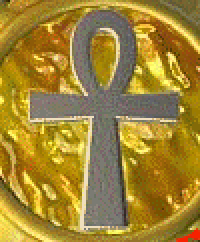 |
SHEKINAH
- One night my wife asked me what SHEKINAH meant. So I ran and got 2 bible dictionaries and a Catholic encyclopedia. They said SHEKINAH meant "house of YAH", "glory of God", and "a visible manifestation of the divine presence". Being a curious kind of person, the word intrigued me. So I started picking it apart. I found it to be a key. A key that unlocked a whole string of puzzles.
- "Shekinah" according to Strong's Bible Dictionary is "shek" - dwelling + "inah" - YAH (the Lord). From my studies, I know "aneah" = "ankh". And "tet/djed" - supporting structure. So - "shek-inah"="tet-ankh" - Tut-Ankh-(Amen). "Tut-ankh-amen" = 'Living Image' of Amen. "Visible manifestation of the divine presence" and "Living Image" are the same thing, confirming my analysis of SHEKINAH is correct. "Tet-Ankh" would also be "house of Enki", which is the same as "house of YAH".
- HATHOR is the Greek version of HET-HERT (the house above). Just looking at the word HATHOR - you get - "house of Thor". HATHOR is known to mean "house of Horus". You can see the connection - (T)hor-us. The "house of Odin" - WODEN - "Wo(o)den".
- It is said, Odin is the Great Sacrifice of our world system, hung or mounted on the Tree of Life throughout its duration.
- You should see where this is leading. The tree is the connection between earth and sky. The ladder to Heaven. The Eternal God - whatever name people have given Him, is either inside the tree, or hung/crucified on it. All this seems to lead to a thing in Egypt called the "Djed Pillar". It is the "house of Osirus" - and of course there is a whole huge story associated with that.
- A curious thing I just noticed - "Heavenly Father"=Jupiter=Zeus Pater=Dyeus Pater. The father is the support for the household. Perhaps "Dyeus Pater" is from "Djed Pillar"?
- I feel the "Djed Pillar"s deriviatives are: the Ankh, the Cross, the Carduceus, the world tree, the tree of life, and the rune YOLE. EL and ALLAH also mean the "strength of a tree".
- So I asked: what would be the "house of Zeus"- HOUSE+ZEUS=HOUZEUS-->Hazeus-->JESUS. Jesus is the SHEKINAH - the image and dwelling place of God. So it makes sense.
- It has been suggested elsewhere that the word "YAH" is derived from the word "DJED". When you look up "Jedi" in the Bible dictionary you get "beloved" - which is "Shiva" in Sanskrit. The Indo-European root for SHIVA is KEI. Which is the same root given for HOUSEhold. Astounding!
- If we consider "Djed" to be essentially within the presence of God, it can be seen as the HAND of God. You can see "Djed" is like the Hebrew "YOD". YOD+ZEUS=Jesus. If you prefer to use "Yoshua" when you pray to our Savior - YOD+SHIVA=Yoshua. Compare to JOSIAH - fire of YAH, healed (hand) of YAH, support (pillar) of YAH. Jesus definitely knew Himself to be the Hand of God:
[Luke 11:20] But if it is by the finger of God that I cast out demons, then the kingdom of God has come upon you.
[Mark 1:15] and saying, "The time is fulfilled, and the kingdom of God is at hand; repent, and believe in the gospel."
- When Jesus said: the Kingdom of God is at hand - He meant: right here - right now.
- When you stretch out your arm and spread your fingers wide, it looks like a tree. The stretched out fingers the limbs of the tree. It also looks like you are holding up the sky. Holding your hands up like this is the common position for praising the Lord. My little daughter pointed this out to me.
- Before you click out of this page with the thought: "this guy is totally nuts, he has no idea what he is talking about." Look at:
[Mat 5:48] You, therefore, must be perfect, as your heavenly Father is perfect.
- "Heavenly Father" in Greek reads: "Uranus Pater" - the grandfather in Greek mythology of Zeus. In the Greek New Testament - over 240 times, Heavenly Father is URANUS PATER (Varuna - Sanskrit). Many sources say He is the highest and most ancient of all the gods.
- Writing of Varuna(Uranus), Muir says:
"The grandest cosmical functions are ascribed to Varuna. Possessed of illimitable knowledge . . . he upholds heaven and earth, he dwells in all worlds as sovereign ruler. . . . He made the golden . . . sun to shine in the firmament. The wind which resounds through the atmosphere is his breath. . . . Through the operation of his laws the moon walks in brightness, and the stars . . . mysteriously vanish in daylight. He knows the flight of birds in the sky, the paths of ships on the ocean, the course of the far-travelling wind, and beholds all the things that have been or shall be done. . . . He witnesses men's truth and falsehood" (TG 360).
- So, indeed, "Uranus" has the identical attributes Christians identify with Almighty God - Our Heavenly Father.
- Knowing "Peter" in Hebrew means "rock" - pillar - and "Uranus" to be "light ring" - "Uranus Pater" would be "light ring pillar" - an ANKH. The ANKH is definitely identified with the Djed Pillar. If you look at the ANKH, you see a cross connecting earth to sky. The cross is Jacob's Ladder - Jesus.
- I think we have come to a place where we can no longer think of this as coincidental. The words paint such a perfect picture. And in my minds eye I see a glowing Ankh - with the stars shining within. God is here. God is here.
- The thing that makes me wonder, is that the name "Uranus" is supposed to be more ancient than any of the other names. It only makes sense that the Pillar was added later. But still thousands of years before Christ.
- In ancient Egyptian religion, the Djed Pillar was associated with the raising of the Djed - the resurrection of a divine being. This event was supposed to usher in a new age. This is obviously prophetic of the crucifixion and resurrection of Jesus.
- I was thinking about the Eastern Religious Holy word for God - OM. I started playing with the words in my head and came up with the word "SHAKINOM". I did numerous word searches in many different places and lo and behold I found the word SHAQAM in a Hebrew dictionary. It means Sycamore Tree. Another tree. The Sycamore Tree is just about the holiest thing in Egyptian religion - essentially representing Heaven. Another word in Hebrew for the Sycamore Tree is SUKOMORAIA. Notice at the end of the word is RA YAH. Again going with the idea of the Almighty being the strength of a tree. The thing is - indeed He is.
[Job 34:14] If it were his intention and he withdrew his spirit and breath, 15 all mankind would perish together and man would return to the dust.
- All of this fits together in such a marvelous way. It makes me wonder.
- Jesus shows us self-sacrifice in obedience to God is the Way to Heaven - the Way of the Cross.
- A father has to go out into the world, work, and sacrifice himself to support the household - the family. It can be seen, this is indeed the foundation of civilization ("civil" is also derived from KEI/Shiva). Too true - I am a father - I know this from first hand experience. Studies have shown fathers abandoning thier homes to be one of the main reasons for the break-down in our society.
- All of this testifies to a common origin to the what scientists call Indo-European peoples. And all the religious wars really brother fighting against brother. The Lord is the unifying one who tells all peoples - love one another. The smoke of centuries is clearing, what may be revealed - may shock us all.
|
|
|
|
|
|
|
|
Reply |
Message 14 of 22 on the subject |
|
|
WALL STREET=MERCANTILISMO= MERCURIO=SHEKINAH |
|
|
|
Reply |
Message 15 of 22 on the subject |
|
|
| Reply |
Message 24 of 24 on the subject |
|
|
| Reply |
Message 172 of 172 on the subject |
|
|
|
|
|
|
|
|
|
Reply |
Message 16 of 22 on the subject |
|
B = Beth = Gimel = #3 letter in Hebrew alphabet = #2 Key in the Tarot 'The High Priestess' = Gimel which is path #13 on the Tree of Life too. 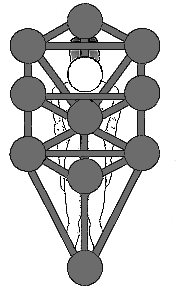 Daath appears to be superimposed over our 'voice'. Our mouth and throat...chakra. Which brings us back to the importance of SOUND. 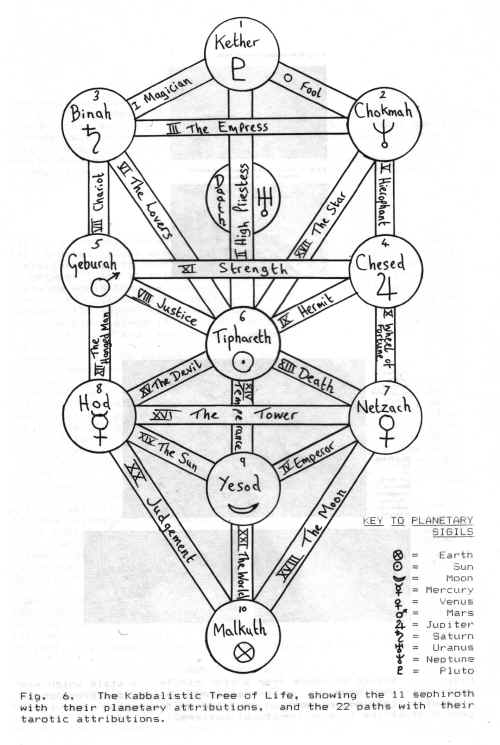 What is Daath in the Tree of Life?  Daath = the magical invisible #11 spot in the tree that cannot be seen.  Daath Daath is quite close to where the High Priestess #3 and the Empress #2 intersect in the TREE of Life...at the center of a HEXAGRAM? More evidence of the sacred feminine being veiled.  Because Daath is what veils the abySS? That could be another interpretation of 'B' = 'SS' = Holy Spirit = veiled feminine generative energies = GRAVITY wave?I am trying here...  namaste
_________________
KEY 528=Swastika=ancient Spherical Standing Wave Theory
“A theory is more impressive the greater is the simplicity of its premise, the more different are the kinds of things it relates and the more extended its range of applicability…”
-Einstein
|
|
|
|
Reply |
Message 17 of 22 on the subject |
|
|
|
|
Reply |
Message 18 of 22 on the subject |
|
|
|
|
Reply |
Message 19 of 22 on the subject |
|
|
|
Mateo 8:28-34
Nueva Biblia Latinoamericana de Hoy (NBLH)
Los Endemoniados Gadarenos
28 Al llegar Jesús al otro lado, a la tierra de los Gadarenos, fueron a Su encuentro dos endemoniados que salían de los sepulcros, violentos en extremo, de manera que nadie podía pasar por aquel camino. 29 Y gritaron: “¿Qué hay entre Tú y nosotros, Hijo de Dios? ¿Has venido aquí para atormentarnos antes del tiempo (designado para el juicio)?”
30 A cierta distancia de ellos estaba paciendo una manada de muchos cerdos; 31 y los demonios Le rogaban: “Si vas a echarnos fuera, mándanos a la manada de cerdos.” 32 “¡Vayan!” les dijo Jesús. Y ellos salieron y entraron en los cerdos; y la manada entera se precipitó por un despeñadero al mar, y perecieron en las aguas.
33 Los que cuidaban la manada huyeron; y fueron a la ciudad y lo contaron todo, incluso lo de los endemoniados. 34 Y toda la ciudad salió al encuentro de Jesús; y cuando Lo vieron, Le rogaron que se fuera de su región.
|
|
|
|
|
|
Reply |
Message 20 of 22 on the subject |
|
Maia, eldest of the seven Pleiades, was mother of Hermes by Zeus.Electra was mother of Dardanus and Iasion by Zeus.Taygete was mother of Lacedaemon, also by Zeus.Alcyone was mother of Hyrieus by Poseidon.Celaeno was mother of Lycus and Eurypylus by Poseidon.Sterope (also Asterope) was mother of Oenomaus by Ares.Merope, youngest of the seven Pleiades, was wooed by Orion. In other mythic contexts she married Sisyphus and, becoming mortal, faded away. She bore to Sisyphus several sons.http://en.wikipedia.org/wiki/Pleiade..._Seven_Sisters |
|
|
|
Reply |
Message 21 of 22 on the subject |
|
|
|
|
Reply |
Message 22 of 22 on the subject |
|
|
|
 First First
 Previous
8 a 22 de 22
Next Previous
8 a 22 de 22
Next
 Last
Last

|

